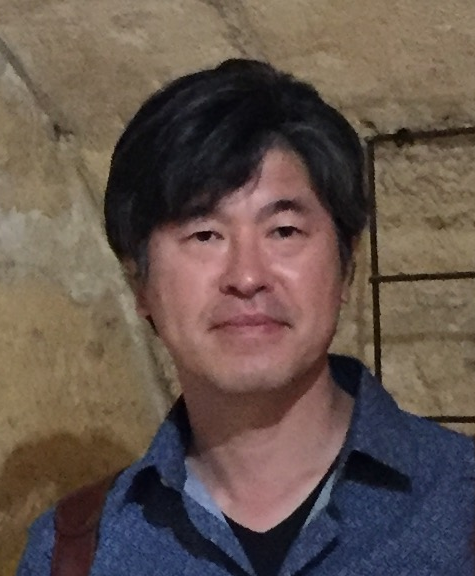| Program B01-1 | Development of muon analysis procedures for carbonaceous material in samples recovered by Hayabusa2 asteroid sample return mission |
|---|---|
| Principal Investigator | NAKAMURA, Tomoki (Tohoku University) |
Hayabusa2 mission was developed based on heritage of Hayabusa mission
that realized first successful recovery of asteroidal sample to the
Earth. Hayabusa2 spacecraft was launched in Nov 2014, carried our
Earth swing by in Dec 2015, and arrived at C-type asteroid Ryugu
around July 2018. Ryugu is classified to C-type asteroids that are
expected to contain hydrated minerals such as serpentine and organic
material. Ground base observations of Ryugu suggested that the
asteroid shows spinning top shape with diameter of 900m and very low
density (1.2 g/cc) (Watanabe et al. 2019), suggesting that Ryugu is
not a first-generation asteroid but a rubble-pile asteroid formed by
re-accretion of impacted and disrupted first-generation asteroid. The
top shape indicates that the asteroid was rotated much faster than
the current rotation period (Watanabe et al. 2019). The reflectance
spectra in the visible and near-infrared wavelength indicate that the
surface mineralogical distribution seems to be heterogeneous, but
most regions show reflectance spectra similar to partially dehydrated
carbonaceous chondrites, implying that Ryugu surface material
experienced hydration and subsequent dehydration by heating (Sugita
et al. 2019: Kitazato et al. 2019).
 Asteroid Ryugu (left: ∼900 m in diameter) and surface rock
(right: the figure width is ∼1 m)
After twice rehearsals, the first touchdown operation was carried
out on Feb 22, 2019. The operation was perfectly successful and
many fragments, dispersed by a tungsten projectile firing, would
have come into a sample container in the spacecraft. The collected
samples will come back to the Earth 2020 winter. Six groups of
different disciplines were selected and organized for initial
analysis of the returned samples. I lead the teams for mineralogy
and petrology of the coarse particles and now develop analysis flow
to maximize science return form the returned samples. The first
results of Ryugu sample analysis will be shown in early 2021.
Asteroid Ryugu (left: ∼900 m in diameter) and surface rock
(right: the figure width is ∼1 m)
After twice rehearsals, the first touchdown operation was carried
out on Feb 22, 2019. The operation was perfectly successful and
many fragments, dispersed by a tungsten projectile firing, would
have come into a sample container in the spacecraft. The collected
samples will come back to the Earth 2020 winter. Six groups of
different disciplines were selected and organized for initial
analysis of the returned samples. I lead the teams for mineralogy
and petrology of the coarse particles and now develop analysis flow
to maximize science return form the returned samples. The first
results of Ryugu sample analysis will be shown in early 2021.
In the present study we like to develop the muon analysis procedures
for carbonaceous material in samples recovered by Hayabusa2 asteroid
sample return mission. Successful application of negative muon will
reveal that three dimensional distribution of C and N within the
samples and bulk N/C ratio of the samples, which in the early solar
nebula is proportioanl to the distance from the Sun. These data,
together with mineralogical and isotope analysis results, will
clarify the nature of the carbonaceous material in C-type asteroid
Ryugu and suggest the heliocentric distance from the Sun when Ryugu
was formed. Carboneous material of C-type asteroid is one of the
candidate for the origin of life on the Earth and therefore muon
analysis will gratly contribute to better understanding of
contribution of C-type asteroid material to the life on the Earth.
Members
- Principal Investigator
- NAKAMURA, Tomoki

(Graduate School of Science, Tohoku University)
- Research Collaborators
-
OSAWA, Takahito (Japan Atomic Energy Agency (JAEA))
NINOMIYA, Kazuhiko (Osaka University)
KOBAYASHI, Shiho (Tohoku University)
Reference Materials
- S. Watanabe, … , T. Nakamura (12th/88 authors) et al., “Hayabusa2 observations of the spinning-top-shaped carbonaceous asteroid 162173 Ryugu,” Science 364, 268–272 (2019).
- K. Kitazato, … , T. Nakamura (8th/58 authors) et al., “Surface composition of asteroid 162173 Ryugu as observed by the Hayabusa2 NIRS3 instrument,” Science 364, 272–275 (2019).
- S. Sugita, … , T. Nakamura (27th/120 authors) et al., “The geomorphology, color, and thermal properties of Ryugu: Implications for parent-body processes,” Science 364, eaaw0422 (2019).
- T. Nakamura, T. Noguchi, M. Tanaka, M. E. Zolensky M. Kimura, A. Tsuchiyama, A. Nakato, T. Ogami, H. Ishida, M. Uesugi, T. Yada, K. Shirai, A. Fujimura, R. Okazaki, S. A. Sandford, Y. Ishibashi, M. Abe, T. Okada, M. Ueno, T. Mukai, M. Yoshikawa, J. Kawaguchi, “Itokawa dust particles: A direct link between S-type asteroids and ordinary chondrites,” Science 333, 1113–1116 (2011).
- T. Nakamura, T. Noguchi, A. Tsuchiyama, T. Ushikubo, N. T. Kita, J. W. Valley, M. E. Zolensky, Y. Kakazu, K. Sakamoto, E. Mashio, K. Uesugi, T. Nakano, “Chondrulelike objects in short-period comet 81P/Wild 2,” Science 321, 1664–1667 (2008).
